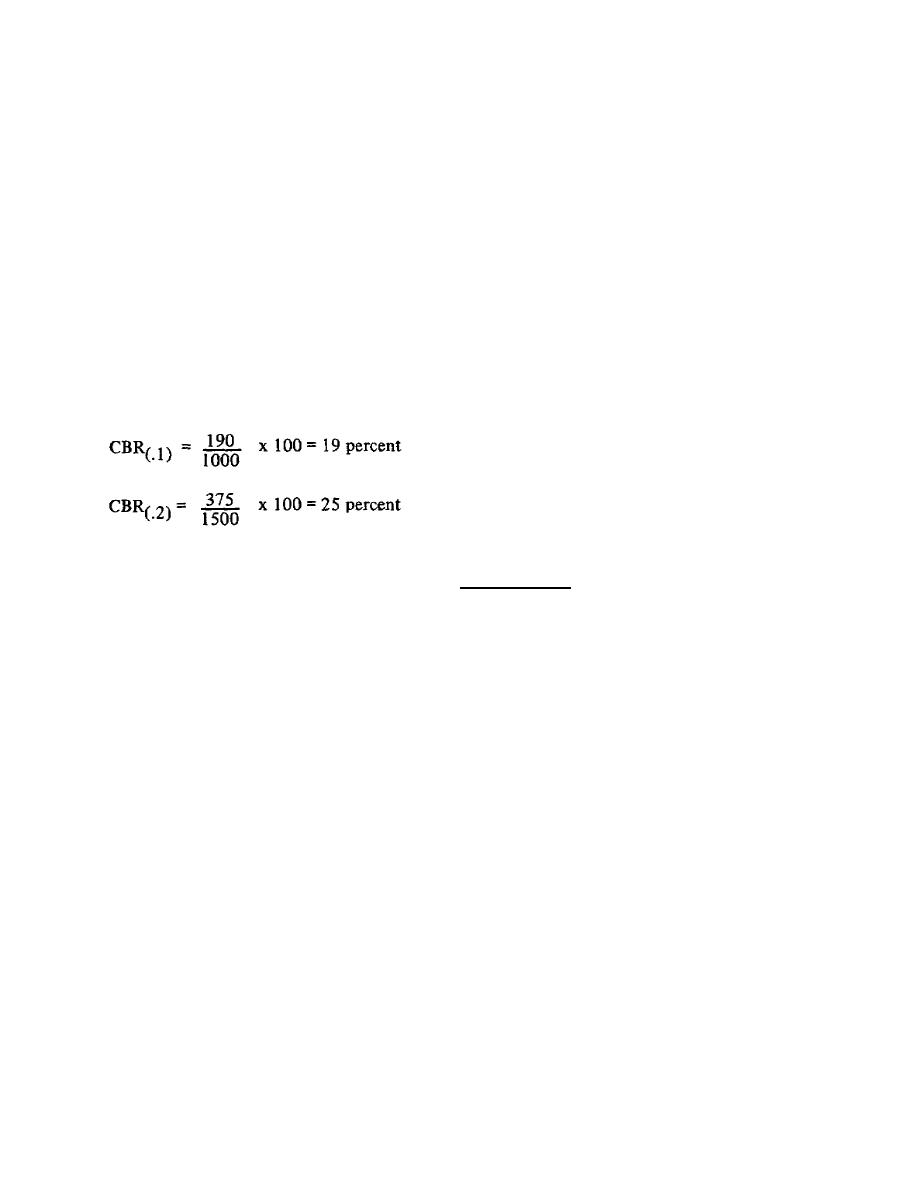
Lesson 5/Learning Event 2
If CBR(.2) is greater than CBR(.1), the soil is still undergoing elastic deformation up to 0.2 inch
of penetration and this elastic strength can be used if verified by a second test.
In the preceding example, the appropriate CBR would be 23 percent if verified by a second test.
Curve B in Figure 35 which has a concaved upward shape between 0 and 0.23 inch penetration is a
manifestation of surface irregularities resulting from the lack of complete initial contact between the
piston and the soil sample surface. Compensation for this fault can be made by extending the straight
line portion of the stress/penetration curve until it intersects the abscissa and taking that intersection as
the new origin. The stresses at the new 0.1- and 0.2-inch penetrations are shown in Figure 35.
The CBR values are computed by equations 3 and 4. Selection of the specific CBR (i.e., CBR(.1) or
CBR(.2)) are made using the same guides as for curve A. In this example:
The appropriate value would be 25 percent if the test were verified. After determining a CBR value
from the penetration data, that value is called the corrected CBR whether or not you have made an
adjustment to the original.
The penetration test described above will give a CBR value of the soil at one moisture content and dry
density. The strength of the soil under field conditions will vary with variations of moisture and density.
Therefore, it is necessary to test the soil under a wide range of moisture and density conditions. Test
programs should be selected based on the type of soil being tested and its intended use in the pavement
structure. Table 9 gives guidelines for the selection of test programs to fit most situations. The
following facts should be kept in mind when developing a testing program.
1. An increase in compactive effort produces an increase in density and a decrease in OMC (where
OMC is the optimum moisture content at a specified compaction).
2. The relationship of strength, water content, and density is complex but follows a distinct pattern.
Knowledge of this pattern is essential to intelligent design.
3. In general, variations of blows in laboratory tests and variations of passes, foot size, tire pressure,
lift thickness, and gross load, produce variations in compactive effort. Proper application of 1
and 2 above can predict the effect of the variations.
116


 Previous Page
Previous Page
